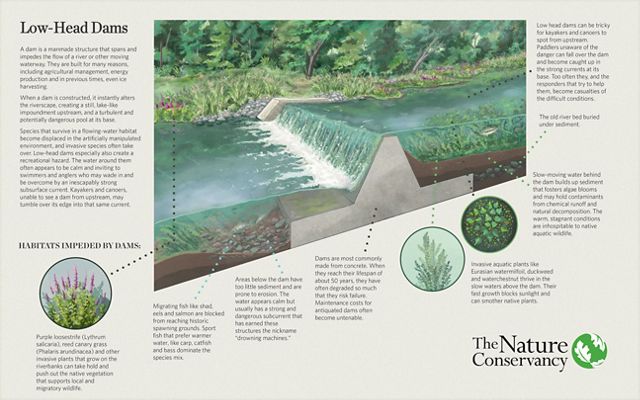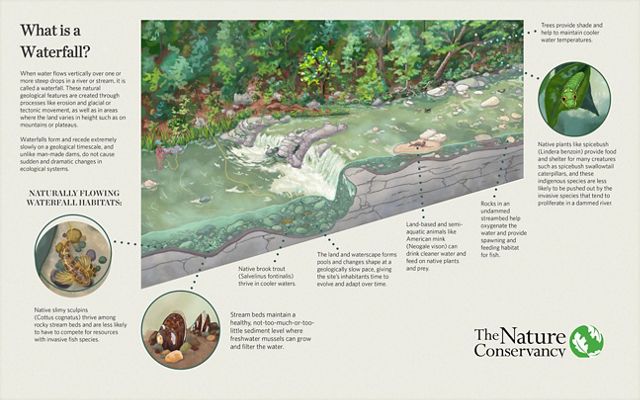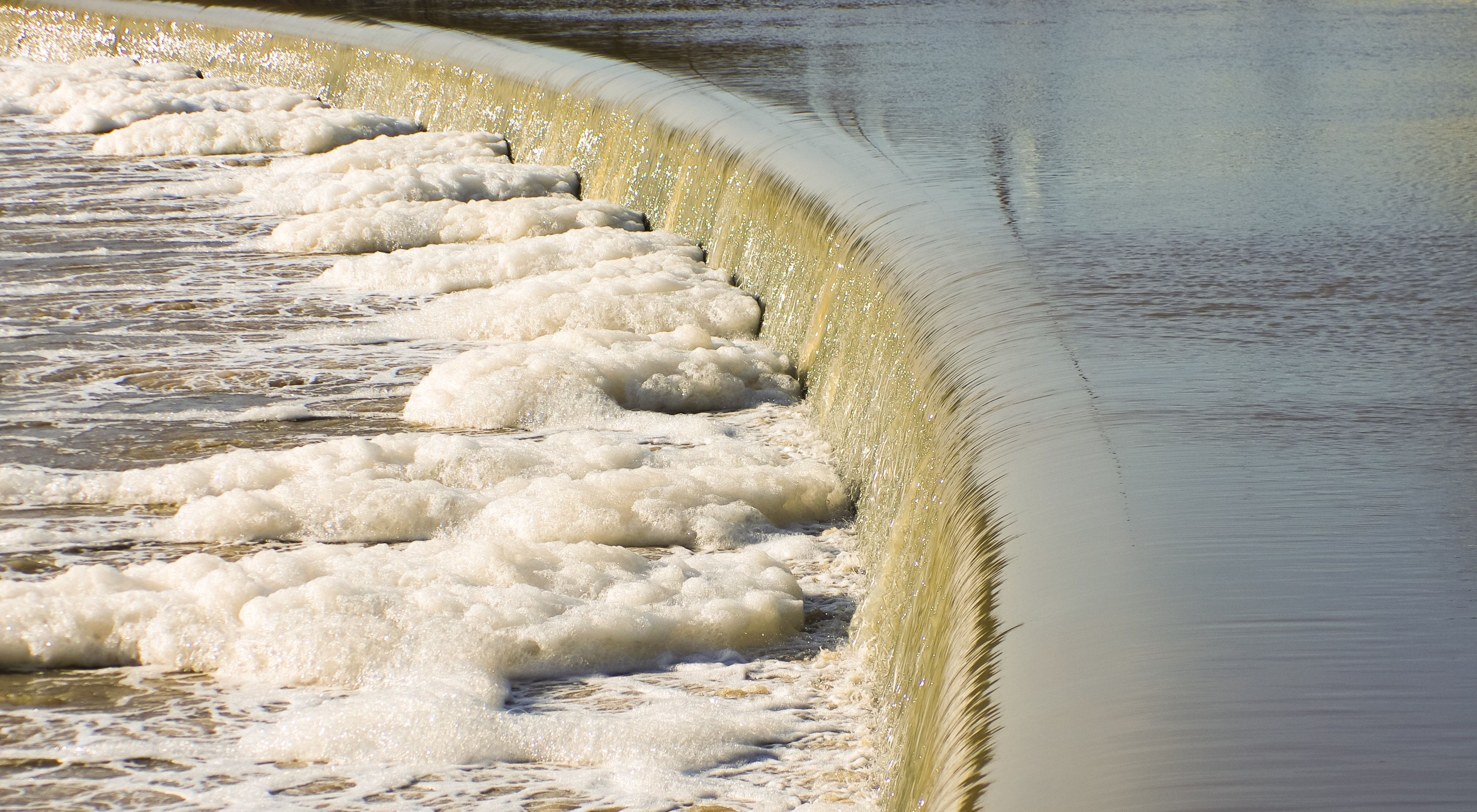Low Head Dam Safety Awareness Month
While all dams can pose risks to people, low-head dams, which usually span the entire width of a waterway, are especially dangerous.
Media Contacts
-
Mary Conti
Marketing Director
Phone: (732) 804-1928
Email: mconti@tnc.org
Dams are not waterfalls. The sound of rushing water may be calming, but if a low-head dam is the source, it is more a cause for vigilance than relaxation. These structures, nicknamed “drowning machines,” have caused more fatalities in the U.S. in the last 20 years than any other kind of dam.
The American Society of Civil Engineers (ASCE) has declared April to be “Low Head Dam Public Safety Awareness Month,” and in New Jersey, there is much to take notice of on this subject: There are 563 dams classified by The New Jersey Department of Environmental Protection Bureau of Dam Safety as high hazard or significant hazard in our state. Each hazard designation points to potential risks if the dam fails, a rating of significant indicates a risk for property damage, a high-hazard rating includes the risk of potential loss of life.
While all dams can pose risks to people, low-head dams, which usually span the entire width of a waterway and range from one to fifteen feet high, are especially dangerous—even when functioning according to their design—because the water around them often appears to be calm and inviting. Swimmers and anglers may wade or dive in thinking it is a “waterfall” flowing into a tranquil pool, only to be overcome by an inescapably strong subsurface current. Kayakers and canoers, unable to see the dam from upstream, may tumble over its edge into that same current. Responders attempting to save these individuals are often among the casualties.

A pencil sketch of a low-head dam with text blocks describing how it functions and why it's dangerous.
Many low head dams were built on New Jersey waterways in the 1800s and early 1900s to generate hydropower, control irrigation or even to produce ice. Most have outlived their purpose by several decades, and the outdated structures now have more negative than positive effects for people and nature.
The New Jersey Statewide Dam Removal Partnership (SDRP), a collaboration of TNC and other nonprofits, government agencies and community leaders, is advancing the removal of antiquated, dangerous or ecologically detrimental dams. Its members are working on the ground to remove priority dams, advocating for policy and funding for easier dam removals, and educating the public about dam safety.
“One of our biggest priorities is public safety, of course,” says Styler Barry. “But there are also compelling economic and ecologic reasons to re-evaluate the necessity of some of these dams. One of the common objections we encounter for removing an old structure is that we are taking away a pretty ‘waterfall’ that people think is a natural feature.”
Quote: Beth Styler Barry
"Dams are not natural, and they are not waterfalls. They frequently cause serious problems for people, water quality and wildlife.”

A pencil sketch of a waterfall with call-out blocks of text listing the key features of a waterfall. Wildlife, plant species and ecological components are also displayed.
Owners of properties that contain old low head dams still have a responsibility to maintain them, and that can come at a very steep price. If an owner fails to maintain a dam and it falls into disrepair, the danger increases exponentially. A possible dam failure due to extreme weather or an aging structure puts people, infrastructure and habitats at much higher risk than a planned removal.
For native wildlife, dams of all kinds are bad news. By limiting movement and blocking access to critical historic spawning grounds, they genetically isolate fish and disrupt the entire food chain. They fundamentally alter a river's flow, degrading the habitats that native species rely upon to survive from cool, oxygen-rich running water to warm, sediment-laden impoundments. And they impede movement of aquatic wildlife seeking refuge in response to climate change.
When an outdated dam is removed, these negative impacts go with it.
What You Can Do
- If you own a dam, consider removing it to improve safety, reduce liability and improve river health. Contact the engineer that conducts required inspections, the NJ Bureau of Dam Safety and/or the Statewide Dam Removal Partnership to better understand your options.
- Always exercise caution around dams of any size, and acquaint yourself with a river before recreating in, on or around it.
- Become familiar with the differences between dams and waterfalls; support and speak up for natural waterways in your community.
The Nature Conservancy is a global conservation organization dedicated to conserving the lands and waters on which all life depends. Guided by science, we create innovative, on-the-ground solutions to our world’s toughest challenges so that nature and people can thrive together. We are tackling climate change, conserving lands, waters and oceans at an unprecedented scale, providing food and water sustainably and helping make cities more sustainable. Working in more than 70 countries and territories, we use a collaborative approach that engages local communities, governments, the private sector, and other partners. To learn more, visit nature.org or follow @nature_press on Twitter.
